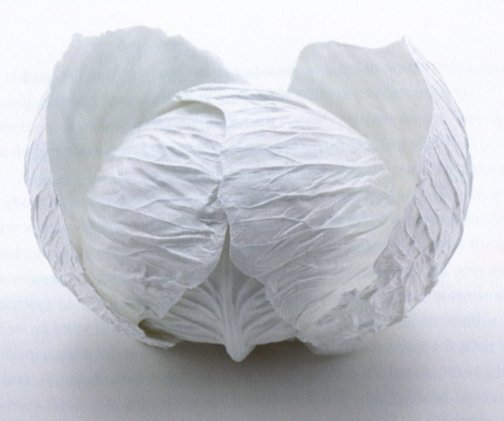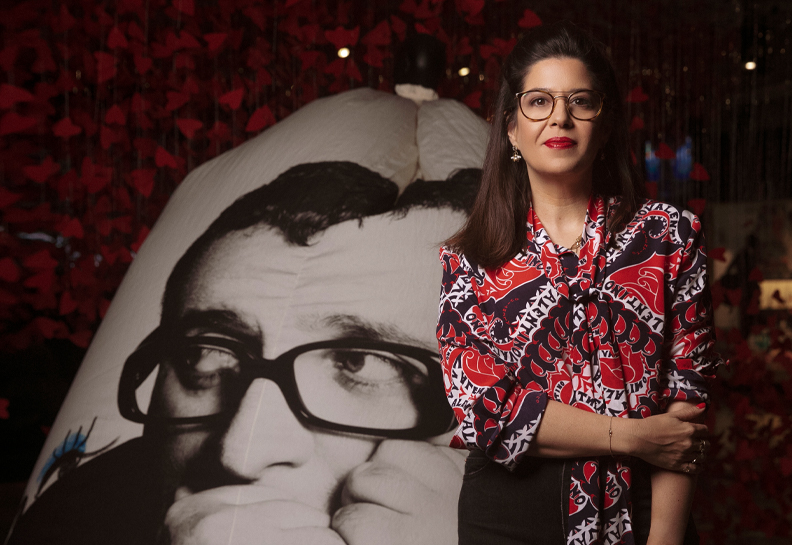Kenya Hara opens his book with the words: “Verbalizing design is another act of design”. The medium chosen by Kenya Hara is a book.

Designing Design By Kenya Hara
Kenya Hara opens his book “Designing Design”, published in 2007 by Lars Müller Publishers, with the words: “Verbalizing design is another act of design”.Words have to be realized in a medium in order to exist. They can be spoken and they can be written, but they must be designed, accorded presence that can be perceived with the senses and interpreted by anyone according to his or her worldview. The medium chosen by Kenya Hara is the book. In his view a book is an “information sculpture”, information sculpted in paper. He wants the reading experience to be situated in the tactile sensation of paper, he wants us to experience it with our fingers, to feel the weight of the book, turn the pages, soil them with use, and allow the book to age on the bookshelf. The medium is not random, but a conscious choice; the medium is the message. The medium stimulates our senses and facilitates the sensory experience. A book is “senseware”.The book is arranged as a journey through Kenya Hara’s work and philosophy, a journey in which he shares with readers his thoughts about the meaning of design. The book is pleasant to read, the language is not overly academic, and there is a sense of participating in a journey interlaced with stories and examples to illustrate his ideas. The design is calm and subdued, based on a meticulous, standard grid throughout all 470 pages of the book; it radiates seriousness, and is striking in its whiteness, like the entirety of Hara’s work.
If I attempt to extract Kenya Hara’s worldview from the chapters of his book, four principal concepts emerge:- Re-design- Senseware- White- ExformationThese concepts are interwoven aspects of Japanese culture, recognized as such through its encounter with Western design.Re-designIn the twentieth century design was perceived as a means for presenting the next new thing. Reality seemed to be constructed of stepping stones on which we skip on our way to a predictable future. In the twenty-first century we became disenchanted with attempts at prediction, and we live in the here-and-now in a constantly changing future, small changes that are revealed as complex and interwoven.Thus, for example, the attempt to re-design macaroni, a simple foodstuff readily available all over the world, which Hara initiated and presented as an exhibition, turned out to be a failure. No macaroni manufacturer wanted to produce the new objects that were designed by twenty renowned architects. It transpired that it is not enough to be creative and design a form of an object; it has to blend in with the “macaroni story”. Macaroni is not merely an object, but comprises a combination of social and cultural values, and when designing macaroni it is necessary to assimilate into them and design them as part of its essence.
For Hara, designing means taking the familiar and presenting it in different way, different from the intuitive. Design creates change in the familiar. The familiar is the sum of all past experiences and memories, and design resonates them within it and presents them in a renewed form. Thus, according to Hara, design is always re-design, and not new design.Re-design does not create a new world, a new object; it creates changes in the extant, and as such it requires sensitivity toward individual and social past. It has to be sensitive and take affordance into consideration, the ability to change and be changed, it has to respect the whole and blend into it.
SensewareDesign stimulates the senses.The main point of design is not how to create an object, but how to stimulate the senses, “design of the senses”, to create creative stimulation of human senses. Hara does not regard the senses as information receptors, but as openings to the world; the way in which man interacts with the world. The designer must think how he can awaken and stimulate the senses before he presents shape and color. If we focus on sensations we will discover an unexplored aspect of design. New sensory experiences design a renewed, different, and changing reality.Sensory experiences are integrative and cannot be separated and defined by means of the five senses – sight, hearing, touch, taste and smell. Just as sensation is integrative, thus too is meaning. Meaning is not obtained in the brain in our heads, but in all the “brains” scattered throughout our body, in all the memories ingrained in them (a holistic view that is the basis of acupuncture). By exploring how senses work, the starting point of design changes, becomes different. Therefore, Hara considers himself a designer in the field of sensory perceptions, as opposed to visual perceptions and design.
For Hara, the relationship between information and man is like the relationship between man and food; both nourish and create him. Food is material, but one cannot ignore its social and cultural values, and information is value, but one cannot ignore its tangible materiality. Therefore, a book is an information sculpture, and paper is senseware, a sensory means. Designers design senseware, means that stimulate the senses.
WhiteIn Kenya Hara’s worldview, white is not a color, but a design concept. In order to understand Hara’s white we must depart from a Western way of thinking and try to connect with Japanese worldview. Hara is not a designer who likes the color white, or one who does not use color. When he uses color he does so from a search for the representation of a particular sensation, and when he attains it, he does not use additional colors that he considers superfluous to his work.What is white?White is a state in which all colors have faded, a pure state, free of interference. White is tranquility, it is the absolute void, it is nothing and it is everything. White is death that is revealed in sun-bleached bones in the desert, white is the pure beginning of life embodied in the whiteness of a mother’s breast milk. White exists on the boundaries of life, colors exist in life, and they are never detached from nature. All colors derive from white, and are partial appearances of it. In the world white is not pure white; it appears in thousands of shades and hues, for it is situated in material. We aspire to pure white out of empathy for everything that is beyond ephemeral in our world.

Hara bemoans the loss of Japanese sensitivity to the influence of modern life. The world is colorful chaos, and when sensitivity diminishes, life and the world become gray. The chaos, however, is not gray, but dynamic changes from which new colors constantly glimmer and which we must learn to distinguish.White emerges from the chaos as perfection, it is not a mixture or a color, it is emptiness filled with everything that repeatedly evaporates in life’s dynamic. To achieve the experience of white and colors, the senses must be trained; sensitivities must be developed in order to attain sophisticated discernment. White is the source of life to which designers should aspire to bring all of us closer.
Ex-formingAccording to Hara, at the basis of a designer’s work is the ability to pose questions that have never been asked, to transform the known into unknown, discover the boundaries of the known, and examine their validity. He regards this process as reversing the process of in-forming to one of ex-forming. Information is the product of putting into form, in-form, according meaning to a happening, defining a question to an answer. In contrast, exformation (a word coined by Hara) means taking the known out of its form and presenting it as extraneous to what we know, a process of finding the question within the existing answer.For Hara, asking questions is more important than providing answers. Creativity is to discover a question that has never been asked. Knowledge is merely the starting point for thinking that engenders a dialogue between extant opinions and other possibilities that open up in its course.

Western society places emphasis on knowing (like tour guides who direct tourists to pre-known sites), not on discovering, on curiosity. In a Western conversation frequent utterances of “I know, I know” will be heard, but Hara wants to hear questions that emerge from curiosity, he wants us to be like Socrates who said that the only true wisdom is in knowing you know nothing.
Can We Summarize?Kenya Hara does not really summarize his path, he does not provide a defined answer to the question he posed, and we remain ostensibly unsatisfied, for we do not receive the absolute answer to the question: How should design be designed?We take part in the journey of a Japanese designer, and through our accumulated baggage of experiences and knowledge we experience what he says. Consequently, we understand something about ourselves that we didn’t understand before. Hara’s objective in writing the book has been fulfilled. He has created in us an awakening, he has opened up the known to questioning, and he has afforded us a different perspective for examining and understanding ourselves. This is the aim of design according to Kenya Hara, and how we continue from this encounter is for us to decide.
Dr. Victor FrostigHolon Institute of Technology



